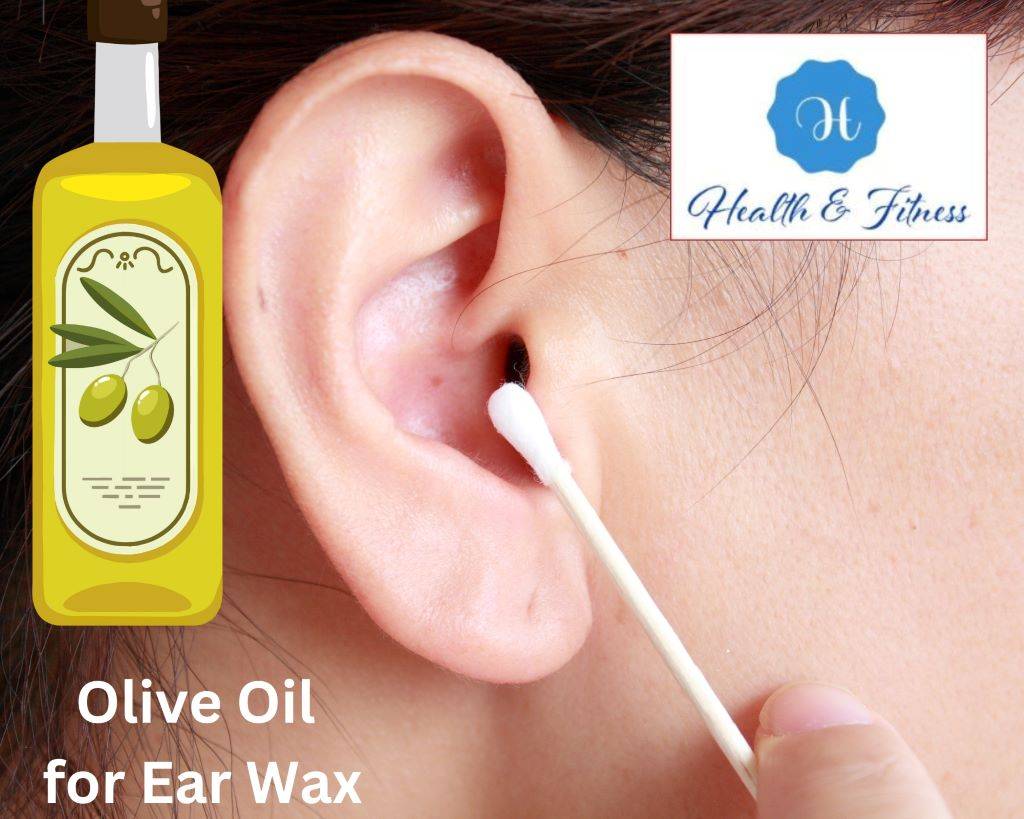Olive Oil for Ear Wax: Unlock the secret of olive oil for ear wax removal and bid farewell to blocked ears. Discover this gentle solution today.
Introduction to Olive Oil for Ear Wax
Ear wax, scientifically known as cerumen, is a common issue many people face. While cerumen plays a crucial role in ear health, too much can lead to discomfort and hearing loss. So, when dealing with an excessive earwax buildup, what options do we have? Olive oil for earwax removal could solve and restore clear and unobstructed ears. Uncover this old-school yet effective remedy to bid farewell to blocked ears.
Understanding Ear Wax
Earwax is a naturally occurring substance secreted by glands located within the ear canal. Contrary to popular belief, it’s not a sign of poor hygiene, but a protective mechanism in your body. By trapping dust, bacteria, and other micro-particles, ear wax prevents them from reaching and damaging the eardrum.
However, some people naturally produce more ear wax than others, while in some cases, the ear doesn’t clear itself efficiently, leading to a buildup. This excess ear wax can cause symptoms such as earache, tinnitus (ringing in the ear), hearing loss, and a feeling of fullness in the ear.
Could you tell me why Olive Oil is used for ear wax?
Olive oil has been used for centuries for its health benefits, and its use for ear wax removal is well-documented. The oil is gentle, natural, and safe for most people, making it a popular choice for this purpose.
Furthermore, olive oil has the right consistency to soften and dislodge hardened ear wax, aiding its safe removal. Plus, it’s a readily available household item you already have in your kitchen.
How Does Olive Oil Help?
When you use olive oil for ear wax, it works magic by penetrating hardened wax and softening it. This liquefied wax is easier for the body to expel or for a healthcare professional to remove safely and naturally.
How to Remove Ear Wax with Olive Oil?
Here’s a step-by-step guide on how to use olive oil for ear wax removal:
Warm the Olive Oil
Olive oil should be warm but not hot. You can warm it by placing the oil in a small container and then placing that container in a bowl of warm water.
Lie Down
Place yourself on your side, afflicted ear facing up.
Administer the Olive Oil
Using a dropper, place a few (2-3) drops of warm olive oil in the ear.
Wait: Remain in that position for 5-10 minutes to allow the oil to soak into the ear wax.
Drain the Oil
Slowly stand up and tilt your head to the opposite side to allow the oil (and hopefully some ear wax) to drain.
Clean: Use a soft cloth to clean any oil that spills out of the ear.
This process can be repeated 1-2 times daily for up to two weeks.
Safety Precautions to Remove Ear Wax with Olive Oil
While olive oil is typically considered safe, it’s essential to remember a few safety considerations:
- Olive oil should be warm, not hot, to prevent burns.
- If you have a known allergy to olive oil, do not use it in your ears.
- If you’re experiencing severe ear pain, discharge, or hearing loss, consult a healthcare professional before homing remedies.
- Never use a cotton swab to attempt to remove wax after using olive oil, as this can push the wax further into the ear canal.
How Long Does Olive Oil Take to Remove Ear Wax?
When using olive oil to remove earwax, you may question how long it takes. Understanding the basic chronology will help you comprehend the length, which depends on individual characteristics and earwax accumulation intensity. We examine how long olive oil takes to dissolve earwax to make ear care more accessible and more informed.
Olive oil’s lubricating and softening qualities help remove stubborn earwax. Note that the procedure takes time. Olive oil ear wax removal requires patience and determination.
Olive oil usually softens and clears earwax in a few days to a few weeks. The time depends on wax content, oil viscosity, and individual physiology.
To ensure optimal results and a smooth ear wax removal process, it’s recommended to follow these general guidelines:
Consistency:
Apply a few drops of warm olive oil into the affected ear daily or as directed by a healthcare professional. Consistency in usage is essential for gradually breaking down the earwax over time.
Time of Application:
Allow the olive oil to remain in the ear canal for at least 5 to 10 minutes during each application. This timeframe provides ample opportunity for the oil to penetrate and soften the wax.
Gentle Massage:
After applying the olive oil, gently massage the area around the ear to facilitate the oil’s distribution and aid in the breakdown of the earwax. This step helps ensure thorough coverage and enhances the effectiveness of the process.
Patience and Observation:
Monitor symptoms and earwax consistency throughout the procedure, and be patient. Eventually, earwax softens and is more straightforward to remove.
Olive oil affects people differently. Some people see improvements faster, while others need more time for the oil to eliminate the earwax. Consult a doctor if symptoms continue or worsen after a reasonable time. Safety and effectiveness are crucial when using olive oil to clean earwax. To prevent ear problems, follow doctors’ directions and be careful. Olive oil may be used to remove earwax if you know the timing and are patient. Accept the progressive therapy and say goodbye to clogged ears and hello to clear hearing.
FAQs about Olive Oil for Ear Wax
Q: Is putting olive oil in the ear safe?
A: Yes, putting olive oil in the ear is safe for earwax removal. It’s a gentle and natural method. However, avoid using it if you have an ear infection or any ear issues. If in doubt, consult a healthcare professional.
Q: How long does olive oil take to clear ear wax?
A: Olive oil may take a few days to clear earwax. Put a few drops in your ear, wait for 5-10 minutes, and then tilt your head to allow the wax to come out. It may take multiple applications over several days for stubborn wax.
Q: What dissolves ear wax fast?
A: For fast earwax removal, over-the-counter earwax drops or solutions are available. They’re designed to soften earwax quickly. Follow the product instructions carefully.
Q: How do you clean your ears with olive oil and peroxide?
A: To clean your ears, mix equal parts olive oil and hydrogen peroxide. Tilt your head, put a few drops in, and wait for a few minutes. Tilt your head to drain. This combination helps soften and remove earwax effectively. If you have concerns or issues, consult a healthcare provider.
A: Yes, olive oil can be used 1-2 times a day for up to two weeks. However, if symptoms persist or worsen, it’s best to seek medical advice.
Q: Does olive oil have any side effects when used in the ear?
A: Olive oil is safe for the ear. However, like any substance, it may cause an allergic reaction in some people. If you notice any discomfort, irritation, or swelling after using olive oil, stop using it and consult a healthcare professional.
Q: Can I use any olive oil for ear wax removal?
A: While most types of olive oil should be safe, it’s best to use extra virgin olive oil. It is the purest form and is less likely to contain additives.
Q: How long does it take for olive oil to remove ear wax?
A: The time it takes for olive oil to remove ear wax can vary. Some people may find relief after just a few uses, while others may need up to two weeks of regular use. If you’re not noticing any improvement after two weeks, it’s best to consult a healthcare professional.
Q: Can I use olive oil for ear wax in children?
A: Yes, olive oil can be used safely in children’s ears. However, it’s best to consult a pediatrician before starting any new treatment in children.
Conclusion about Olive Oil for Earwax
Olive oil for earwax is a gentle, natural, and effective remedy for earwax buildup. However, always remember that every individual is different. What works for one person may not work for another. If symptoms persist or worsen despite using olive oil, never hesitate to seek professional medical advice. Your ears are critical—take care of them!
References
https://www.enthealth.org/conditions/conductive-hearing-loss/



